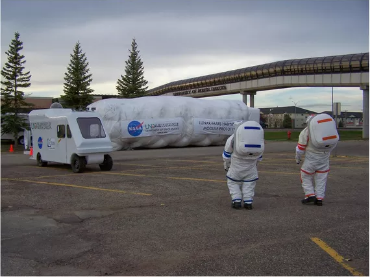
Life in space can be hard, what with the lack of gravity, the abundance of radiation and a number of other things that can kill or damage a person. Now NASA is investigating another somewhat surprising enemy of astronaut health: fungus.
A new study published Monday in the journal Microbiome shows that when you add humans to the type of enclosed habitats that could one day be used on the moon or other planets like Mars, it can give a boost to the community of fungal stowaways known as the mycobiome.
A team lead by researchers from NASA's Jet Propulsion Laboratory watched what happened when humans moved into the Inflatable Lunar/Mars Analog Habitat (ILMAH) meant to simulate conditions on the International Space Station and on hypothetical lunar or Martian bases.
"We showed that the overall fungal diversity changed when humans were present," report co-author and NASA Senior Research Scientist Dr. Kasthuri Venkateswaran, said in a release.
Certain fungi seemed to thrive once humans were added to the ILMAH, including some that can colonize the body and cause allergies, asthma or infections, particularly in people with decreased immune systems like astronauts.
























